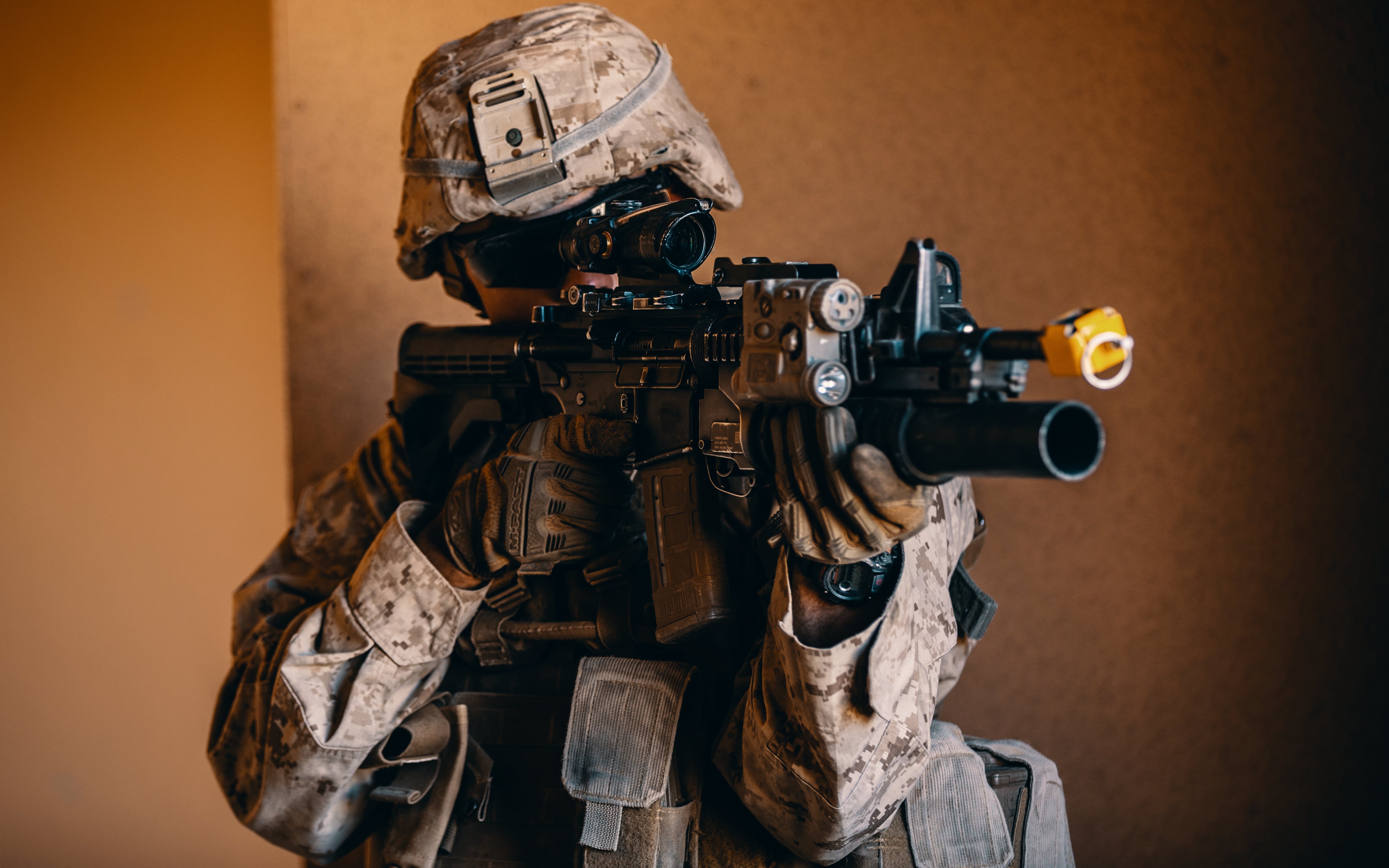The Marines plan to field a new force-on-force shooting simulator in 2024 that will replace the 1970s-era technology that’s reached its service limits.
The new system underwent testing in December 2023 and is planned for fielding first at the Marine Corps Air Ground Combat Center, Twentynine Palms, California.
Following that fielding, Marine spokeswoman Morgan Blackstock said, the Corps will then field the system to Camp Pendleton, California, Camp Lejeune, North Carolina, Marine Corps Base Hawaii and Marine Corps Base Quantico, Virginia.
The Corps first announced the Force-on-Force Training Systems-Next program in 2021 after beginning to seek a replacement for the Instrumented Tactical Engagement Simulation System, or ITESS, the replacement for the legacy Multiple Integrated Laser Engagement System, or MILES, in 2017, Marine Corps Times previously reported.
The Force-on-Force Training Systems-Next system has since been renamed the Marine Corps Tactical Instrumentation System, or MCTIS.
That year Army officials announced the Multiple Integrated Laser Engagement System would become obsolete by 2026. The Army currently is seeking its own replacement for the legacy shooting simulators.
RELATED

Saab Inc. won the contract, potentially worth up to $248 million in 2021. Marine Corps Tactical Instrumentation System uses vests equipped with sensors to detect not only hits and misses but also track movement and location data.
That information can be used for real-time tracking during training and after-action reviews using playback features. Such features will allow trainers and observers to accurately analyze user performance in force-on-force training.
In early testing, the system could track the muzzle direction of Marines moving up floors of a building in an urban training site.
The new system also aims to solve some training challenges with both MILES and ITESS. Both are laser-based.
Lasers do a lot of things, but simple physics prevents users from accurately replicating bullets and other projectile ballistics.
The first generation ITESS could handle 120 Marines and opposition forces, the second generation expanded that number to 1,500.
Each Marine Corps Tactical Instrumentation System will have the capacity to handle a battalion-on-battalion fight, or an estimated 2,500 users, Marine Corps Times previously reported.
For instance, users cannot lead a moving target when firing a laser, which is a must for hitting targets with real projectiles. Lasers can’t simulate indirect fire such as mortars or artillery. And even the slightest of disturbances, such as tree leaves or shrubs can stop the laser from connecting with its target.
Todd South has written about crime, courts, government and the military for multiple publications since 2004 and was named a 2014 Pulitzer finalist for a co-written project on witness intimidation. Todd is a Marine veteran of the Iraq War.








